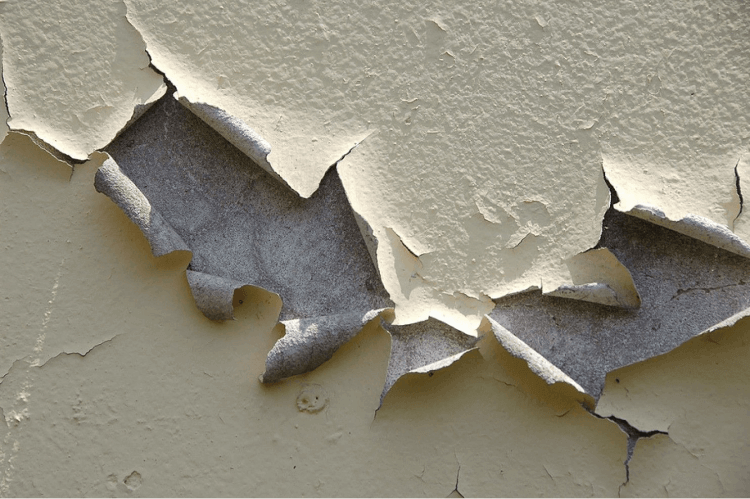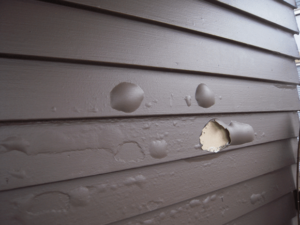Seven common questions about exterior painting:
- Why is the exterior of my house peeling?
- Is priming necessary for the exterior repaint?
- How long should an exterior paint job last?
- Did the previous painters use the right product?
- Do you use bleach to clean mildew before painting/staining?
- Why is my light color trim or siding turning black color?
- What’s the best exterior brand of paint or stain?
These are some of the questions many homeowners ask when I go for a consultation and/or estimate. Unfortunately, there are no easy answers to any of these questions. However, I’m going to try and list some of the common issues related to exterior painting in the next few weeks. These are questions that I’ve been asked by homeowners in and around Westchester County New York.
Following is the first of seven series posts to answer these commonly asked questions:
Why is the exterior of my house peeling?

There are many reasons for peeling paint on the exterior of house and buildings.
One of the main reasons paint peels on exterior wood or stucco surfaces are the presence of water/moisture. I don’t mean the moisture in the air or the rain or snow hitting the painted surface directly. I mean the moisture that gets to the back of the boards or shingles.
Many of the older homes have siding or shingles that are not back-primed. When moisture finds its way to the back of the boards, it penetrates the wood and ends up behinds the paint film. The water/moisture then pushes the paint out to escape and therefore causes peeling.
Many painting contractors promise to cure this peeling problem by applying a great oil base primer that can seal the surface and stop the peeling! DO NOT believe such claims! If there is moisture, there will be peeling. Not only the oil primer cannot stop the peeling but also can cause mildew growth on the exterior of your building.
There is not much you could do to stop the peeling completely unless you replace the siding with new pre-primed siding or shingles and repair the source of moisture. You may slow down the peeling by inserting some metal wedges under the siding to lift the siding and allow air flow. The air flow behind the siding helps keep the back dry and moisture to escape. The dryer the back of the boards the better chance for the paint not to peel again.

I’ve seen painters caulk the seam under the clapboard siding which is another big NO in my book! It is best to leave that small gap for possible moisture to escape rather than trapping it behind the boards.
You would be surprised, what small amounts of moisture can do when trapped behind the paint. In extreme cases, I have seen water shooting out of these paint bubbles upon contact.
In summary water and paint don’t get along and the presence of moisture causes paint film to peel. Therefore, it is best to look for the source of the problem and fix it rather than applying a different paint product in hope of curing the peeling.
In the next post, I’ll address the second of “Seven Common Questions about Exterior Painting.”
Owner & General Manager
Meet Mr. Paint Track himself, Ray! Having been in the industry for three decades, Ray has built Paint Track on a foundation of honesty, knowledge, and respect. He exemplifies leadership, with a commitment to both his craft and our team. Ray is known for his great sense of humor, and if you’re familiar with him, you’ve undoubtedly heard numerous jokes! His vibrant energy uplifts our team. Thanks to his leadership, Paint Track has earned a reputation as a trusted name in the community for the past 20 years.
Ray’s expertise and dedication to quality are evident in every project Paint Track undertakes. He’s not only a master of his craft but also a mentor who generously shares his wealth of knowledge with every team member, helping each of us grow and improve. Ray’s hands-on approach ensures that every detail is attended to, and he consistently goes above and beyond to exceed client expectations.
Ray’s educational background includes a bachelor’s degree in Computer Science and a master’s degree in Telecommunications, which have contributed to his exceptional organizational skills and analytical approach to managing projects. His education and strategic thinking have been instrumental in building an efficient and effective business operation that continues to deliver outstanding results.
In addition to his work with Paint Track, Ray is deeply involved in the community. He actively participates in multiple Chamber of Commerce groups and serves as a board member on the Painting Contractors Association (PCA) Education and Finance Committees. His dedication to advancing the industry and supporting local businesses exemplifies his commitment to both Paint Track and the community.
Under Ray’s leadership, Paint Track has become known not just for superior workmanship but for a client-centered approach that prioritizes communication, transparency, and trust. We’re incredibly grateful to have him leading the way, and we’re proud to carry forward his legacy of excellence in every job we do.
Skills Leadership, customer relations, estimating, and problem solving
Hobbies: Exercise, beekeeping, and hiking
Favorite Paint Color: Sherwin Williams Indigo 6531


